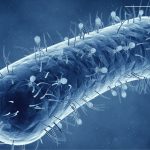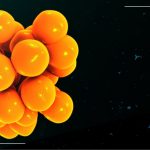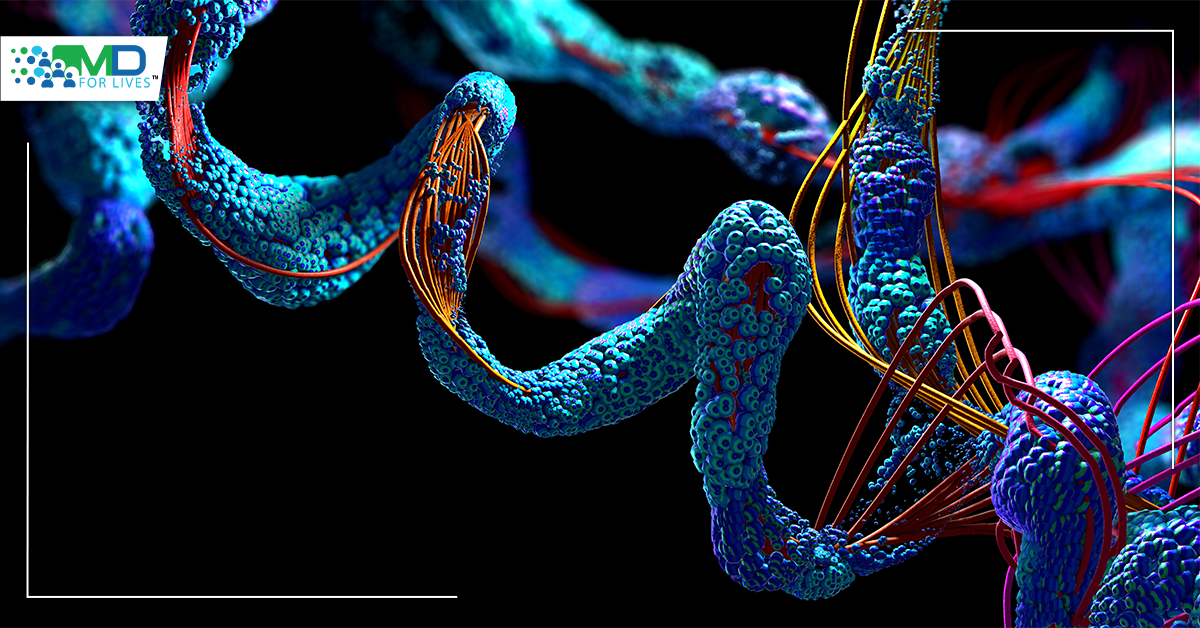A recent study illuminates a possible cause of endometriosis and suggests a possible therapeutic strategy.1,2,3 As described in an August 2021 publication, researchers linked a gene to endometriosis and then used a molecule to block the effects of that gene in animals with promising results.1,2,3
What is endometriosis?
Endometriosis is a chronic inflammatory disease in which the endometrial tissue develops outside the uterus, most commonly around the pelvic organs, and in less common cases, outside the pelvic area.1,4,5 It is an estrogen-dependent condition and is seen in 5% to 10% of women during their reproductive years.1,4
The American Society of Reproductive Medicine (ASRM) classifies endometriosis surgically into four stages, stages I to IV, where I and II are mild forms of the disease and III and IV are more severe forms of the disease.1,4 This classification provides information on the volume and the location of endometriosis.5

Endometriosis symptoms
Pelvic pain, which is most likely caused by localized inflammation, is the main symptom of endometriosis; in fact, endometriosis is the most common cause of chronic pelvic pain in women.1,4,5 Heavy and painful menstrual periods, which can be debilitating, and painful intercourse is also endometriosis symptoms. Infertility can occur.1,4 All these symptoms affect patients’ productivity and quality of life and may lead to anxiety and depression.4

Causes of endometriosis
The underlying causes of endometriosis are not well understood, but retrograde menstruation that follows ovulatory menses is typically involved.4,5 In retrograde menstruation, the endometrial tissue flows backwards into the fallopian tube and the lower abdominal cavity and can implant there, leading to endometriosis.4,5 Both environmental and genetic factors are thought to contribute to endometriosis, and its heritability is estimated at 50%.1,4,5

Endometriosis Treatment
Endometriosis treatment is focused on alleviating pain and preventing infertility, in addition to improving patients’ quality of life and preventing disease recurrence.4,5 Surgical and hormonal therapy are the main treatment options; both have side effects.1
Hormone therapy to alter or eliminate menstruation, thereby suppressing the cyclic growth of the endometrial tissue, can help reduce inflammation and lesion formation and thus can control pain in some patients.4,5 However, the hormonal agents come with various side effects, and pain is likely to recur when the treatment is stopped.1,2 In addition, finding the best hormone regimen can take time.2
Surgery is reserved for patients whose pain cannot be managed using hormone therapy or who need pain relief but want to get pregnant in the near future.5 Treating infertility in the context of endometriosis can be challenging, but in vitro fertilization has shown similar success rates in women with and without endometriosis.4
Research uncovers a potential cause of endometriosis
Given the high heritability of endometriosis, scientists used genetic linkage analysis studies to search for chromosomal areas potentially linked to the condition. In research over the course of several decades, the investigators focused on families in which three or more members had been diagnosed with endometriosis and identified a stretch of chromosome 7 as being linked to the condition.1,6

More recently, in an article published in August 2021 in the Science Translational Medicine journal, scientists sequenced a region of chromosome 7 in women from the families of interest and from unaffected control subjects.1,2,3,6 By doing so, they identified a gene in chromosome 7 called neuropeptide S (NPS) receptor 1 (NPSR1), in which specific variants were more common in women diagnosed with the condition, mostly with stage III and IV of the disease, compared to controls.1,2,3
After identifying the NPSR1 gene, the researchers performed linkage analysis and NPSR1 sequencing in 849 rhesus macaques (this monkey species is susceptible to naturally occurring endometriosis) and found that variants of the same gene were associated with endometriosis in the monkeys.1,2,3
Finally, the scientists applied an inhibitor of the protein NPSR1 called SHA 68R to combat a mouse model of endometriosis.1,2 The inflammation and abdominal pain-related behaviors were significantly reduced in this mouse model.1,2
All these results suggest that NPSR1 is a promising non-hormonal target for future endometriosis treatments, specifically for stages III and IV of the disease, and that research into its functions could lead to more insights regarding the pathogenesis of the condition.1,2

References
- https://www.science.org/doi/10.1126/scitranslmed.abd6469
- https://www.science.org/news/2021/08/inflammation-gene-may-be-possible-drug-target-endometriosis
- https://www.drugtargetreview.com/news/96318/npsr1-gene-discovered-as-a-key-cause-of-endometriosis/
- https://www.ncbi.nlm.nih.gov/pmc/articles/PMC6693056/?report=reader
- https://www.ncbi.nlm.nih.gov/books/NBK278996/
- https://academic.oup.com/humrep/article/22/3/717/608239






